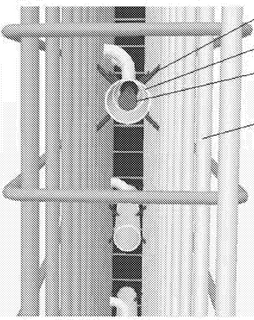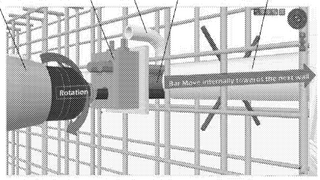
Traditional approach of building shear walls
Precast India Infrastructures Ltd have come up with new method of precast wall connection. They highlighted it as faster and easier than known methods. Construction industry today cast shear walls entirely on-site. This on-site work includes :
- Lifting scaffolding to the floor
- Erecting the scaffolding on sides of the wall
- Transporting prepared reinforcement from site stack yard to the floor
- Reinforcement tying
- Getting formwork to the floor
- Erecting and securing the formwork
- Hoisting or pumping concrete to the floor
- Vibrating concrete at depths of 2-3m
- Curing on-site, Deshuttering after sufficient strength achieved
- Repeat process for every floor
In this process everybody must wait to achieve sufficient strength in the wall to go up on the another floor or level. This is straight time waste with no choice. Further, above process can generate quality issues like segregation because of pouring concrete from height. You need to do lot of time management between the different teams with expertise in their particular operation. In short, everything just fall into the place just in time to get best results, and that seldom happens.
Precast wall connection by CIS joint
Here, we can cast walls horizontally at shop floor in one shot. This precast technology saves lot of time, labour and money without compromising the quality. Stages of precast shear walls with CIS joint:
- Raise precast shear walls and scaffolding
- Support the walls
- Align and grout the bottom of precast shear wall
- Expose the wire loop by breaking concrete
- Re-bend the bent loop into straight format
- Insert steel bars from the top
- Fill the joints of size 200mm-250mm wide by shuttering the in-situ concrete
The last two steps mentioned above become frustrating after the quick erection of precast shear wall. All the time saved in the precast wall is taken by preparation to joint the walls.
New precast wall connection method
In the new connection method, the precast walls itself made differently. This precast wall contains, apart from the horizontal and vertical reinforcement bars, multiple hollow tubes. These hollow tubes are embedded into the precast wall at designed locations in between the reinforcement bars. This connecting tube is held in place by holdfasts. The opening is provided into the precast wall, between the two connecting tubes. Also, there is a grouting tube provided to open into that opening from the surface of the wall. There are multiple grout tubes and openings at predefined locations.

Now, when the first precast wall is erected at its planned location, the connecting bars are inserted into the connecting tubes. You can actually touch the connecting bars at the openings provided into the shear wall. Then the second precast shear wall is placed at its planned location. The second wall is placed in such a way that the openings of connecting tubes from the first precast wall matches to those of the second wall. It’s must be a perfect match.
There is a connecting device used to transfer the connecting bar from the first wall to into the tubes of second shear wall. For connecting device to push these bars, the predefined openings are used. This connecting device includes active drive and suitable connection profiles of shaft to engage with the bar inside the tube. After this operation the connecting bar is partially present inside the both walls.

The gap between these two precast walls is just 50mm. So, the gap in the wall as well as the openings left in the walls are grouted easily by raising small supports along the walls. This way method of precast wall connection is made less labour dependent, less steel consuming, simpler, faster, CIS -less, error free, less utility consuming and safe.
Related technology to wall connection
GRW Manufacturing PTY LTD from Austria has invented the device for the precast shear wall connection. This development by GRW dates back to the year 2014. This connection method by Precast India Infrastructure Ltd will be tough to protect.
More on Civil Engineering..


Nice Article. Thanks!